
Guru Arvind ji
Yogi Arvind Negi, a yogi & mentor to his students, hails from the Yoga Capital of the World, Rishikesh, India...Read More

The process of learning is endless, but being the traditional yoga school in Rishikesh. We offer the ultimate course where students can learn the most advanced techniques and skills of yoga under the guidance of our expert teachers. The 500 Hour Yoga Teacher Training in Rishikesh offers the students in-depth knowledge through theoretical learning while offering expertise in the postures and asanas with dedicated classes on each style of yoga – Hatha Yoga, Yin Yoga, Iyengar Yoga, Ashtanga Yoga & Vinyasa Flow.
The 500 hour Yoga Teacher Training is very different as it combines both 200 hour yoga TTC and 300 hour Yoga Teacher Training. The course is ideal for practitioners who wish to learn advanced techniques and understanding of various styles if yoga along with Yoga History & Philosophy, Ayurveda History & Philosophy, Anatomy & Physiology, Yin Yoga Meridians, Teaching Methodology and much more.
The course is a perfect mixture of modern and traditional learning which makes it ideal for today's world and students after completing this course can pursue a career as a Yoga Alliance Certified Yoga Teacher. The course includes certification from the Yoga Alliance, USA which qualifies each student to practice and teach across the globe.
This course starts from 3rd & 12th of every month starting from USD 1299.
The changing work culture, routine and human requirements have changed and with the change many of us have seen negative impacts on our health. Everything that we follow now whether it is food preferences or the sleep schedule is not exactly what is recommended for optimal health. We at Gurukul Yogashala have observed the seriousness of this problem and with our customized course, we wish to help every individual with their lifestyle changes and more opportunities in the future.
With our teacher who has devoted their life to yogic practice. We have prepared this course where modern-day issues can be solved using the traditional methods of yoga. Each subject in the course will help the students change their lifestyle and shift towards a happier and healthier being.
Our 500 Hour Yoga Teacher Training will not only help you with Vedic lifestyle changes but will also help you with the right practices to adopt as part of your daily routine to improve your overall health. After completion of 500 Hour Yoga Teacher Training, you will be able to become a Yoga Alliance Certified Yoga Teacher and be the beacon of change worldwide.
The 500 Hour Yoga Teacher Training at Gurukul Yogashala is the most advanced course where students will learn a combination of 200 Hour Yoga TTC and 300 Hour Yoga Teacher Training. As this course holds an advanced level of learning, having a complete understanding of the basics and intermediate level of practice would help in avoiding injuries and better learning. The course also requires students to have complete knowledge about the basics as this course will include a revision from the previous courses to reclaim the learning and move ahead with the most advanced and complete learning about the styles, techniques, teaching methodology, theory and everything that revolves around yoga.
We would love to invite all the practitioners who have devoted their lives to learning and polishing their skills. The course would require determination and dedication to reach the advanced stages of yoga. So be prepared for the learning of a lifetime with Gurukul Yogashala.
| 05+ | Year of EXPERIENCE |
725+ | Students Graduate |

The course which spans between 58 days that will help to understand the traditional teachings with a modern outlook so you can easily apply in your daily life and teach others also after the completion of the course. Let have a look what you will learn:
Hatha Yoga is one of the ancient practices of yoga which is considered to offer spiritual perfection. This style of yoga is mainly focused on the postures and breathing techniques that help in relaxing the mind. During the class, our teacher will guide the students to perform it properly concerning understanding the body's strength and flexibility. This is a great style to incorporate into your daily practice as it not only improves flexibility and strength but also helps in relaxing and calming the mind.
Yin yoga is based on the Taoist concept of yin and yang, opposite and complementary principles in nature. Yin yoga works deeply into your body with passive, longer-held poses. The practice of Yin yoga is a transformative journey of self-discovery that gives practitioners unprecedented access to the deeper realms of the mind and body.
K. Pattabhi Jois developed a modern-day form called Ashtanga Yoga in the mid-20th century, an energetic practice of mindful movements with breath awareness. Ashtanga Yoga is a self-assisted series but when you are learning from an experienced teacher then you will understand the right way to do all the asanas in the series. Despite being a physical practice, Ashtanga yoga promotes mental clarity and inner peace, making it a challenging workout.
Vinyasa Flow style is one of the most advanced and intensive forms of yoga. It focuses on the strength of your body and breathing. Vinyasa Flow have the movement sequences with focus on the breath. Vinyasa Flow is all about the deep inhale and exhale of your breath as you move from one posture to the other.
Pranayama or the method of rhythmic breathing is a style of yoga, where using different techniques of breathing we fulfil the requirement of the body and purify it. The concentration over breathing not only helps in delivering the right amount of oxygen or detoxifying but also helps in improving and deepening the connection of the mind with the body while improving calmness and concentration. The course will help the student learn different locks, styles and mudra for the practice of pranayama.
Meditation is one of the best practices of yoga which offers great self-control while improving mind strength. The practice introduces you to deeper enlightenment leading to better concentration and focus. The human brain is functional even when we sleep, but with the right techniques and practices, we can control it and eliminate the external disturbance. The classes of meditation by our teachers will help the students unlock a wide spectrum of inward journeys and a heightened sense of awareness with mental clarity.
Yoga Nidra (psychic sleep) is sleeping in awareness in such a way that takes you from a conscious state to a superconscious state of awareness. The goal is to shut out the five senses so the mind can attain pratyahara.
Following the traditional and authentic practices of yoga, our schools prioritize health by offering knowledge about cleansing the body internally and externally. Shat Karma is a practice in Yoga where practitioners clean their body using various techniques to improve immunity and balance between mind and body. The students with the 100-Hour Yoga Teacher Training Course in Rishikesh will learn the right methods for performing various techniques to cleanse their bodies.
Mudras are the gestures that help in channelising and distributing the pranas in the body. Most of the Mudras are done with hands but there are other different mudras also. Mudras should be performed under the guidance of expert teachers.
While doing yoga, your body generates a lot of energy or prana. With mudra, channel this energy, and with bandhas, control and maintain it in the body to prevent it from draining. When done right, the bandhas can also help awaken the Kundalini.
We at Gurukul Yogashala offer traditional and Vedic knowledge to our students with our customized course on Yoga. We aim to keep the purity and serenity of Yoga alive through our students and spread it across the globe. To follow our aim, with every course of our, we share the knowledge, aim, beliefs and practices gained from the ancient scripture through the subject. This subject will uncover key concepts, beliefs in a higher power, the importance of self-realization, and the recognition of the interconnectedness of all things on this globe.
Ayurveda is the ancient healing science to heal the body in the holistic way. It is through the different practices of Ayurveda; you can heal the body by clearing out the doshas of the body. Following are the things you will learn during 200 Hour Yoga Teacher Training Course:
Similar to learning the right things it is important to know about our body. With Anatomy and Physiology as a subject, we try to share all the necessary information with our students to help them in their yogic journey. The main reason behind this subject is to improve understanding. The subjects will cover a range of topics including bones, body structures, nervous system, and muscles. With another sub-division on Spiritual anatomy, we will share knowledge about the chakras, energy levels, and five layers of self.
Physical yoga anatomy is an essential subject for ensuring a safe, effective, and personalized yoga practice. Empowering the newly certified yoga teachers with the skills needed to guide students safely and effectively.
Spiritual anatomy deals with the subtle and energetic aspects of the self-exploring the connections between the physical body, mind, and the spiritual dimensions for holistic growth.
The course involved movement and asanas which required body conditioning and strength. While performing asana and movement it is very important to consider the limitations of the body and understand the structure of our body. With our dedicated subject on alignment and adjustment, students will get a brief on how to perfect each movement and understand how to avoid injuries. A little tweak in the movement can help avoid lifetime pain or injury. Under the guidance of our expert teacher, you will attain the best learning on the movement and the right way to perform it.
It is not enough to learn and practice yoga to be a great yoga teacher. Teaching yoga is an art as it can change lives so a lot of preparation and skills go into it.
You will get the certification at the end of the course after proper evaluation. The evaluation will be based on:
The requirement of 90% attendance throughout the semester will be used as a criterion for each student's grade. A valid attendance rate of 90% is required, with an acceptable and understandable justification for the remaining 10% of missed classes.
Gurukul Yogashala takes every participant on a cultural tour in Rishikesh which not only helps in having a first-hand experience with the local culture of Rishikesh but also helps in understanding and connecting with the place of birth of Yoga where many yogis have found their spiritual enlightenment. The cultural tour will be conducted in every batch.
With Gurukul Yogashala, during your 200 Hour Yoga Teacher Training in Rishikesh, you will have the opportunity to be part of different healing sessions. Anyone of the following sessions will be conducted during the course according to the availability of the teacher.
1. Sound Healing Session
Sound healing has healing vibrations that are very powerful. It also helps you relax and calm your mind.
2. Emotional Healing Session
Gurukul Yogashala is giving every yoga Aspirant the perfect opportunity to attend this complimentary session to start their healing journey.
The ability to experience and express emotions is more important than you might realize. When you’re in tune with your emotions, you have access to important knowledge that helps with:
3. Reiki Healing Session
Reiki Healing Sessions helps in releasing of stress and offer calmness to your mind and body. Balance yourself with deep healing with Reiki.
Restorative yoga is a restful practice that is all about slowing down and opening your body through passive stretching. Restorative yoga is suitable for practitioners of all levels. It is a practice of deep relaxation that emphasizes the meditative aspect of yoga—the union of body and mind. Through the use of props for support, many of the postures are held almost effortlessly.
Benefits of Restorative Yoga
Acro Yoga can include partner is a physical practice that combines yoga helping in building trust between partners and increasing strength.
During your 200 Hour Yoga Teacher Training, you will learn and be part of the different massage therapy workshops. Gurukul Yogashala will be conducting anyone of the following session during the course according to the availability of the therapist.
1. Ayurveda Massage Therapy Workshop
In Ayurveda Massage Therapy workshop, there will be combination of demonstration of various techniques that will be used in a massage to achieve the best possible results. You will have an understanding how to move hands for the massage and in which direction.
2. Marma Points Therapy Workshop
A marma point therapy workshop teaches you about marma therapy, an ancient Ayurvedic healing practice that involves stimulating specific points on the body. The practice involves stimulating these points to promote healing, balance the body, and improve energy flow.
3. Naturopathy Therapy Workshop
Naturopathy is a holistic system of medicine that uses natural remedies and therapies to promote wellness and self-healing. In the Naturopathy Therapy Session, you will have the knowledge of different types of Naturopathy massages that help you understand about different massages.
The course offers a wider spectrum of learning for each course. Hatha Yoga is a great style to practice as the style offers balance in the body while improving the connection between mind and body. While the practice includes different movements and techniques it can still help in reducing stress and improve breathing. Our expert teacher with decades of experience will guide each student towards the advanced and in-depth learning of Hatha Yoga with personalized attention.
Iyengar yoga is a style of Hatha yoga that emphasizes alignment, accuracy and posture perfection. B.K.S Iyengar developed this form intending to enhance the connection between mind and body through asanas and pranayama. Under the guidance of our well-versed instructors, students will get a chance to polish their skills and move towards advanced movements.
The most complex style of yoga is Ashtanga Yoga. The style requires strength, concentration and agility to perform it. For the advanced level, our course will first help students with their learning and then gradually move towards the advanced movement with the guidance of our teacher. The style is great for developing a strong connection between the body and mind while allowing the body to push the limits with synchronized breathing techniques.
Pranayama is the breathing practice where students will learn to adopt various techniques to control breathing and calm the mind. The practice will help in attaining maximum connection between the body and mind while offering an overall synchronized breathing experience for other styles of yoga. The course will unfold the most advanced techniques of locks and practice to reach tranquillity.
The final principle of yoga, Meditation is a great practice of freeing the mind from burden and fostering sincerity and devotion. Our course offers comprehensive sessions to improve the connection between the body and concentration. Meditation is a transformative journey where external disturbances are removed to embark on a new journey towards spiritual enlightenment.
Yoga Nidra (psychic sleep) is sleeping in awareness in such a way that takes you from a conscious state to a superconscious state of awareness. The goal is to shut out the five senses so the mind can attain pratyahara.
Shatkarma is one of the ancient yogic practices for which years of practice and patience are required. This is a very important practice as it helps in cleansing the body internally using different yogic techniques. The course will unveil these techniques and students will learn from the teacher how to perform and cleanse their bodies for better immunity and purity.
Mudras are the divine gestures that channel and distribute prana in the body. Most of the mudras are performed by hand. Practitioner can have immense benefits from mudras if they are performed in the right manner under the guidance of an expert.
While doing yoga, your body generates a lot of energy or prana. With mudra, channel this energy and with bandhas, control and maintain it in the body to prevent it from draining. When done right, the bandhas can also help awaken the Kundalini.
At Yogpeeth Rishikesh, we aim to keep the authenticity of the traditional yoga to help every yoga lover find the reasoning and philosophy behind Yoga practices Understanding why yoga is not just practicing asanas rather much more than that. Yoga Philosophy will help you in understanding the key concepts, the importance of self-realization, and you will be able to connect practical and spiritual aspects of Yoga.
Ayurveda is the ancient healing science to heal the body in the holistic way. It is through the different practices of Ayurveda; you can heal the body by clearing out the doshas of the body. Following are the things you will learn during 300 Hour Yoga Teacher Training Course:
Physical yoga anatomy is an essential subject for ensuring a safe, effective, and personalized yoga practice. Empowering the new certified yoga teachers with the skills needed to guide students safely and effectively.
Spiritual anatomy deals with the subtle and energetic aspects of the self-exploring the connections between the physical body, mind, and the spiritual dimensions for holistic growth.
Yoga is lifestyle. Yoga not only helps in the physical fitness but also helps in nurturing and keeping the body healthy. In the Yoga Therapy classes, you will be able to learn various different techniques and therapies improve the physical and mental well-being.
Adjusting and aligning yourself as well the others is an important part of asana practice. It is important to align your own body as well as to understand the mistakes so that you will get no injuries while practicing and also while you are teaching as a Certified Yoga Teacher. A little tweak in the movement can help avoid lifetime pain or injury. Under the guidance of our expert teacher, you will attain the best learning on the movement and the right way to perform it.
Becoming a Certified Yoga Teacher will be incomplete without understanding how to conduct a class all the while managing the proper flow and correcting the students. All of this and much more will be learned during the Teaching Methodology Session
You will get the certification at the end of the course after proper evaluation. The evaluation will be based on:
Gurukul Yogashala takes every participant on a cultural tour in Rishikesh which not only helps in having a first-hand experience with the local culture of Rishikesh but also helps in understanding and connecting with the place of birth of Yoga where many yogis have found their spiritual enlightenment. The cultural tour will be conducted in every batch.
With Gurukul Yogashala, during your 200 Hour Yoga Teacher Training in Rishikesh, you will have the opportunity to be part of different healing sessions. Anyone of the following sessions will be conducted during the course according to the availability of the teacher.
1. Sound Healing Session
Sound healing has healing vibrations that are very powerful. It also helps you relax and calm your mind.
2. Emotional Healing Session
Gurukul Yogashala is giving every yoga Aspirant the perfect opportunity to attend this complimentary session to start their healing journey.
The ability to experience and express emotions is more important than you might realize. When you’re in tune with your emotions, you have access to important knowledge that helps with:
3. Reiki Healing Session
Reiki Healing Sessions helps in releasing of stress and offer calmness to your mind and body. Balance yourself with deep healing with Reiki.
Restorative yoga is a restful practice that is all about slowing down and opening your body through passive stretching. Restorative yoga is suitable for practitioners of all levels. It is a practice of deep relaxation that emphasizes the meditative aspect of yoga—the union of body and mind. Through the use of props for support, many of the postures are held almost effortlessly.
Benefits of Restorative Yoga
Acro Yoga can include partner is a physical practice that combines yoga helping in building trust between partners and increasing strength.
During your 200 Hour Yoga Teacher Training, you will learn and be part of the different massage therapy workshops. Gurukul Yogashala will be conducting anyone of the following session during the course according to the availability of the therapist.
1. Ayurveda Massage Therapy Workshop
In Ayurveda Massage Therapy workshop, there will be combination of demonstration of various techniques that will be used in a massage to achieve the best possible results. You will have an understanding how to move hands for the massage and in which direction.
2. Marma Points Therapy Workshop
A marma point therapy workshop teaches you about marma therapy, an ancient Ayurvedic healing practice that involves stimulating specific points on the body. The practice involves stimulating these points to promote healing, balance the body, and improve energy flow.
3. Naturopathy Therapy Workshop
Naturopathy is a holistic system of medicine that uses natural remedies and therapies to promote wellness and self-healing. In the Naturopathy Therapy Session, you will have the knowledge of different types of Naturopathy massages that help you understand about different massages.
Gurukul Yogashala follows a schedule prescribed by Yoga Alliance regulations.
05:30 AMYog Sadhna |
|
06:00 AMAshtanga & Vinyasa Yoga |
|
07:30 AMShatkarma Kriya & Pranayama |
|
08:30 AMFruits Breakfast |
|
09:00 AMYoga Philosophy & Physiology |
|
10:15 AMAlignment & Adjustment |
|
11:30 AMBrunch |
|

|
|
12:00 PMRest |
|
|
14:00 PMSvadhaya / Self-Study |
|
|
15:00 PMTea Break |
|
|
15:30 PMAnatomy & Yoga Therapy |
|
|
16:45 PMHatha Yoga |
|
|
18:30 PMMeditation |
|
|
19:30 PMDinner |
Our lodging offers comfortable rooms with stunning mountain views, invigorating showers, spacious closets, and free Wi-Fi. Guests can choose between shared or private rooms, both with private bathrooms that have hot and cold running water. Nearby shops cater to all needs within walking distance. Our management team ensures a tidy atmosphere throughout your stay. You'll get to relish the aroma of nature and experience the essence of divinity while practicing yoga outdoors with a breathtaking view of the Himalayas and the Ganges. It's an idyllic setting to call home during your stay.

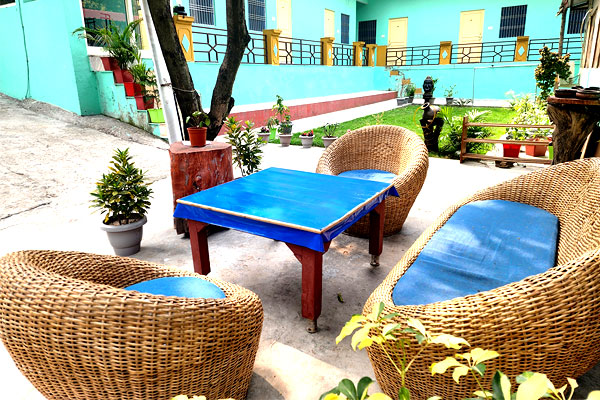
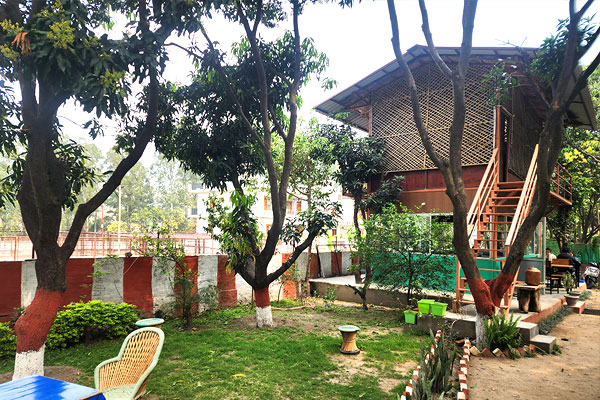
Meals of a yogic diet have been served at the Gurukul Yogashala in Rishikesh. Getting started with yoga is easier with the help of our gluten-free, yogic diet. The meal, together with the detox tea and juices, contains a good balance of nutrients such as vitamins, proteins, carbohydrates, calcium, and other minerals. We believe that Meditation loses its efficacy when consumed alongside unhealthy eating. At Gurukul Yogashala, a special effort has been made on the diet which is healthy with full of nutrients. What we eat has a significant impact on our ability to meditate and practice yoga.
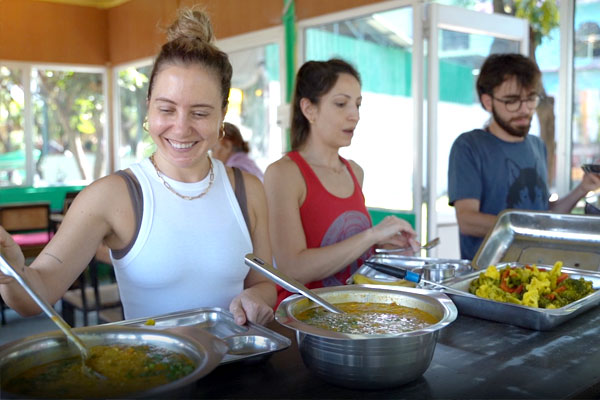

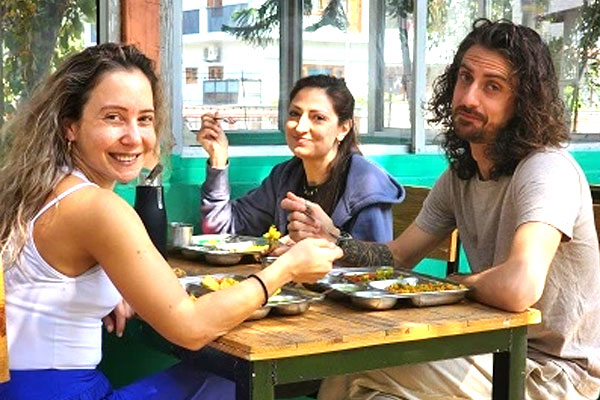
We believe in serving food that is freshly-made with local ingredients suitable according to weather conditions to help digestion. With the philosophy of "We Become What We Eat", Ashram chef makes food with love which helps you in your yoga journey.
| Fresh, locally-sourced vegetarian dishes. | Authentic traditional Indian cuisine. | |
| Gluten-free options for yogic diet. | Sattvic and clean foods for yoga energy. |

Connect with the divine energy of the Vashistha cave

Enjoy a peaceful hike in the woods up to the waterfall.

Let the energy of the holy Ganga bring you inner peace
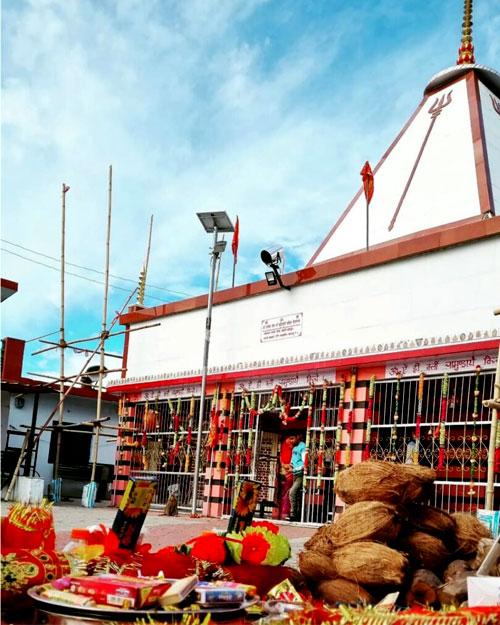
Witness the breathtaking views of the greater Himalayas
Gurukul Yogashala - 500 Hour YTTC
| 3rd of Every Month |
|
Private Room USD 2199
|
Twin Sharing USD 1799
|
Quad Sharing USD 1399
|
| 12th of Every Month |
|
Private Room USD 2099
|
Twin Sharing USD 1599
|
Quad Sharing USD 1299
|
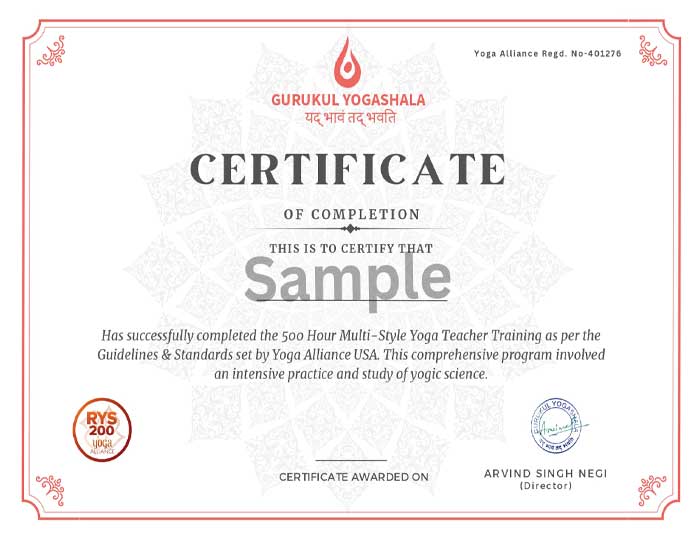
Gurukul Yogashala, Traditional Yoga School in Rishikesh, shares knowledge of yoga that is based on our ancient scriptures – the Vedas. Rishikesh, known as the Yoga Capital of the world, has always been blessed with true knowledge of yoga gurus and sages since ancient times. At Gurukul Yogashala, we believe that yoga is not just a physical practice but a holistic way of life that can be included in our daily lives to make it better. We stand by our traditional values but are determined to nurture transformation for modern needs. With the philosophy of "You Become What You Believe", we open the doors of self-discovery through our yoga teacher training course in Rishikesh to empower you with the skills and knowledge to become a certified yoga teacher.

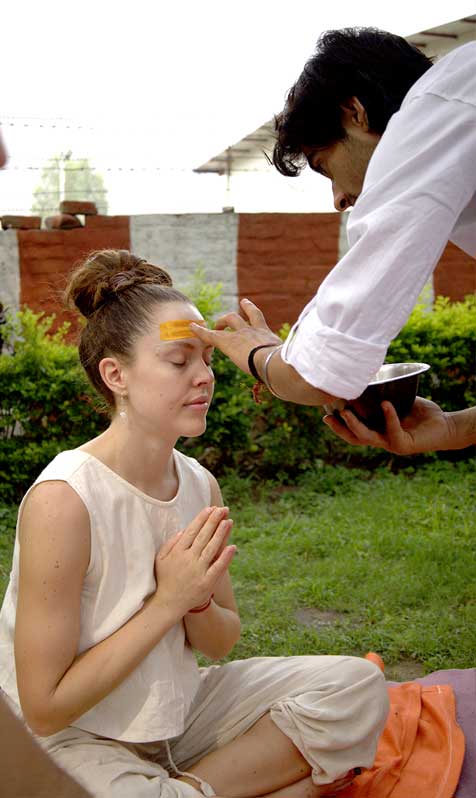

Yogi Arvind Negi, a yogi & mentor to his students, hails from the Yoga Capital of the World, Rishikesh, India...Read More
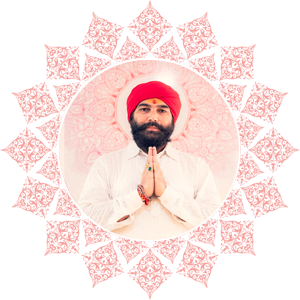
Yogacharya Sanjeev Pandey ji, a 7th generation Himalayan Yogi, he is MSc. Phd. Yogic science & Human Consciousness...Read More

Guru Keshav Dav Ji, a spiritual guru & practitioner, hails from the tranquil region of Amanguna near Rishikesh....Read More
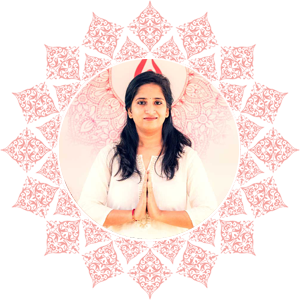
Shikha Sharma, a native of Delhi, began her journey into the world of yoga at the tender age of five under...Read More

Born and raised in a traditional Brahmin family in the holy city of Rishikesh, Yogi Upendra Ji was introduced to...Read More
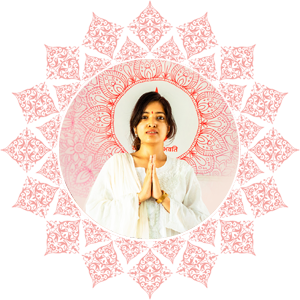
With BAMS from Ayurvedic Medical College & Hospital, Dr. Shivani Negi is proficient Ayurvedic Doctor With the passion...Read More
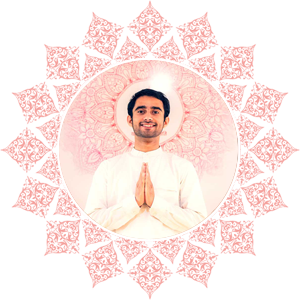
Naveen Bisht is an accomplished Ashtanga & Vinyasa Yoga teacher who has been teaching at Gurukul Yogashala...Read More

With life-long passion to understand human mind and how different healing works, Disha started her journey...Read More

Ritesh Bhatt is a yoga teacher for last 6 years. He was born and raised in Rishikesh, Uttarakhand (also known as world capital of Yoga) ...Read More

With Diploma and Masters in Yogic Science, Gagandeep is an accomplished Anatomy & Physiology and Yoga Therapy...Read More
Gurukul Yogashala - 500 Hour YTTC
 |
 |
A Yoga Alliance certified school is one that has met the standards set by Yoga Alliance, a globally recognized organization that sets guidelines for yoga teacher training programs and registers both individual yoga teachers (RYTs) and yoga schools (RYSs).


My name is Laura Olivia and I live in Canada, one of the reasons I came to India was to learn yoga. At first, I didnt intend to do 200 hours of yoga teacher training but seeing the course syllabus on their website and the good reviews I tried it for 24 days and I dont regret it one bit.
We were received very warmly with a fire ceremony and delicious and a healthy satvic dinner

These are the people who change lives. I'm so grateful for the 3-day yoga retreat I attended at Gurukul Yogashala. It was everything I hoped for and more. 3 days seems like such a short time, but the retreat offers various outings and activities to make you feel...
like you've really gotten a taste of this holy city. Rishikesh is such a beautiful backdrop for transformation.

Hi, my name is Robin, and I am coming from Montreal! I really enjoyed doing my YTTC with Gurukul Yogashala. I have been able to understand what's a correct posture, even the simplest one ;) Arvind was able to challenge and motivate me. Before coming to this
centre I read various book about yoga, but it's only during these 24 days that I have been able to fully catch what yoga actually is.
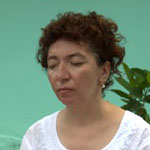
I had a great experience as ambience is great. The teachers are amazing they know a lot of traditional practices. The staff members are very nice and accommodating. I liked my time here a lot. Learned a lot of things. Had a great time. …
I have learned a lot from Arvind ji. The asana practices have helped me open my heart. I am so grateful to meet all the people here - teachers, staff members made a lot of good friends.I am going back home with so many good memories and love.Had a great time. Will come back again.

I completed my 200-hour teacher training at Gurukul Yogashala, and it was a wonderful experience. The administration team, teachers, and staff were incredibly supportive, making the transition smooth and assisting with anything I needed....
The classes were very informative, and I feel ready to practice on my own back in Mauritius. The schedule at Gurukul Yogashala will surely help me become a more disciplined person. The food was excellent, and I made new connections with students from around the world.Highly recommended—truly a lifetime experience!

I feel blessed to get the experience I’ve gotten in the 50 hours intensive meditation program. I got knowledge and experience which was addressed and specific ....
to my own profession as future MD and for my past western experience. Moreover, the team took care of whatever wish I had and made it feel like my very own home from the first time I walked into school. I will be there hopefully soon to learn and experience more.
Dedication and self-motivation are essential for the success of our course. The practice and teaching of yoga require a profound level of self-discipline and purity. To uphold the integrity of the program, participants must actively participate in all spiritual activities, meditation sessions, lectures, and asana classes.
In alignment with the principles of yoga, certain lifestyle choices are prohibited during the course. These include the consumption of meat, fish, eggs, black tea, coffee, alcohol, tobacco, drugs, and any form of nudity. Such practices are counterproductive to the path of yoga. Participants who fail to adhere to these guidelines may be dismissed from the course to maintain the sanctity of the learning environment.
Nudity is strictly prohibited.
An advance payment of course fees is non-refundable, except in cases of emergencies where students can reschedule to join us on other available schedules.
If a student chooses to cancel the course after joining, the course fees will not be refunded. However, there is no additional charge for the cancellation itself.
We encourage students to carefully consider their commitment to the course before making any payments.
Gurukul Yogashala Trustpilot Reviews
Based on 15 Reviews
MEDHA JHA
Hi, I am a beginner and I wanted to do and learn about Yoga & Meditation since a very long time but was unable to find the correct initiation & guidance. Thanks to Gurukul Yogashala for providing this path. ...
Elin
Gurukul Yogashala is a peaceful oasis where one can learn about many different forms of yoga, as well as meditation, anatomy, Ayurveda, and much more.The classes are taught by extremely...
Leonie Pauline
I had a great experience as ambience is great of Gurukul Yogashala. The teachers are amazing they know a lot of traditional practices. The staff members are very nice and accommodating. I liked my time
Rossella sette
I recently completed a 100-hour yoga teacher training course at Gurukul Yogashala; it was a trasformative experience. The classes were taught by very kind and knowledgable ...
Pranjali Vyas
Namaste,I have completed my 200-hour Multi Style Yoga Teacher Training Course (TTC). It was a wonderful experience to be at the school and gain knowledge that, upon reflection,...
Sneha
I completed my 200-hour teacher training at Gurukul Yogashala, and it was a wonderful experience. The administration team, teachers, and staff were incredibly supportive,...
Marietta Magrina
I enrolled in 200Hr multistyle yoga teacher training course at Gurukul Yogashala. We had classes from ashtanga - vinyasa , hatha yoga, philosophy classes , ...
Let us share the love with all!
Gurukul Yogashala is taking one step at a time to change tomorrow for the better by giving the right to education for girls. Our belief that everyone should have right to proper education, Gurukul Yogashala Ashram is giving back to society to give each and every girl an opportunity to take a leap of faith to reach new heights.
The Gurukul Yogashala Ashram doors are always open for everyone who wants a learning for a better tomorrow.
